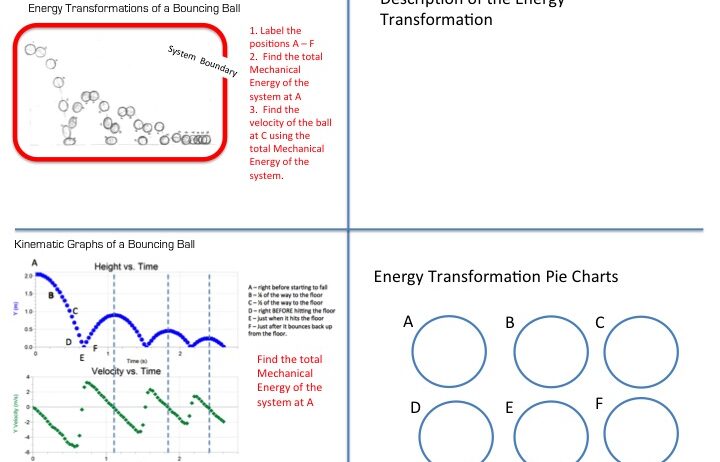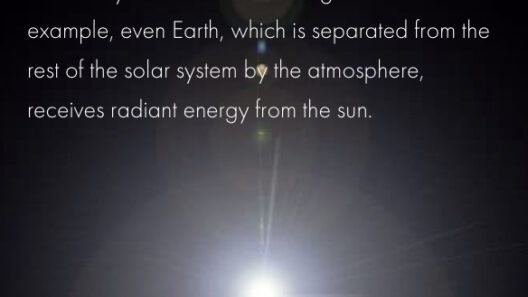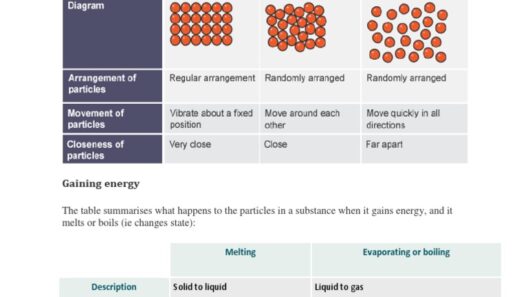When observing a bouncing ball, one might simply perceive a playful interaction with gravity, yet there lies a compelling narrative of energy transformation and conservation that merits closer scrutiny. At first glance, it appears straightforward: drop a ball, watch it bounce, and repeat. However, this commonplace occurrence encapsulates profound principles of physics that underscore the conservation of energy—an integral concept in both natural sciences and practical applications.
The journey of a bouncing ball begins with gravitational potential energy. This type of energy is contingent upon an object’s height above the ground; the higher the ball is raised, the more stored energy it possesses. When the ball is held aloft, its potential energy reaches a maximum threshold. Upon release, this potential energy undergoes conversion into kinetic energy, which is the energy of motion. As gravity exerts its relentless pull, the ball accelerates downward, its speed increasing until it strikes the ground.
Upon impact, the ball experiences a rapid deceleration, necessitating an understanding of how energy is transformed during this process. Most people may think that upon hitting the ground, the ball simply loses energy. However, a more intricate exchange occurs. The ball compresses at the moment of contact, converting kinetic energy into elastic potential energy. The deformation of the ball’s material stores this energy momentarily as the ball squashes against the ground. Remarkably, at this stage, it is essential to appreciate that energy is not obliterated; instead, it is temporarily held within the system as the ball undergoes physical alteration.
As the ball returns to its original shape, the stored elastic potential energy is released. This conversion process enables the ball to rebound upward, transmuting the energy back into kinetic form. Essentially, the greater the compression, the higher the rebound, contingent upon several factors including the material properties of the ball and the surface upon which it strikes. Thus, the phenomenon of bouncing becomes a captivating representation of energy cycling—an ongoing metamorphosis between potential, kinetic, and elastic energy.
It is vital to consider the notion of energy conservation in this context. The principle of conservation of energy asserts that energy cannot be created or destroyed, only transformed from one form to another. In an ideal, frictionless environment, the total energy of the system remains constant. However, in the real world, energy losses occur due to inelastic collisions and the dissipation of energy through sound and heat. For instance, when a ball bounces, a fraction of the energy is transferred to the ground in the form of sound waves, generating the familiar “thud” we hear upon impact. Additionally, some energy dissipates as heat due to internal friction within the ball’s material, which further influences the height of subsequent bounces.
The significance of these energy losses can profoundly affect the behavior of the ball. A perfectly elastic ball—consider a superball—will retain more energy when rebounding compared to a standard rubber ball, which absorbs more energy due to its inelastic properties. The height of each successive bounce typically decreases, exemplifying the second law of thermodynamics: energy transformation is inherently inefficient. Thus, after each bounce, the ball’s height diminishes, echoing the universal truth that energy conservation operates alongside entropy.
This dynamic interplay between energy conservation and transformation also invites reflection on broader ecological implications. The simplicity of a bouncing ball serves as an microcosm for understanding energy flows in larger systems, including ecosystems and even planetary atmospheres. Just as the ball undergoes energy exchanges, so too do the components of our environment. Energy is transferred through food webs, meteorological systems, and anthropogenic activities, prompting a constant recalibration of energy states across various filters including biotic and abiotic factors. The importance of conserving energy on a macroscopic level hinges upon similar principles of efficiency and sustainability.
Moreover, the relationship between energy conservation and climate change becomes even more pertinent as we grasp the fundamental principles illustrated by a bouncing ball. The fossil fuels we rely upon result in substantial energy transformations that contribute to greenhouse gas emissions and environmental degradation. Understanding how energy is conserved and transformed can empower individuals and industries alike to innovate energy-efficient technologies that minimize waste and promote sustainability. It is an essential step on the path to addressing the looming crises associated with climate change, where conserving energy becomes an ethical imperative in the face of human-induced perturbations to natural systems.
As we reflect on the bouncing ball, what emerges is more than a passage of energy; it becomes a poignant reminder of our responsibilities to harness energy wisely. The simplicity of the bounce belies a deeper narrative intertwined with the natural laws governing our world. Each rise and fall of the ball encapsulates a broader understanding of the energy cycles that sustain life on Earth. By observing its energetic dance, we are led to question our practices and the nature of our interactions with our environment. In turn, this can inspire us to cultivate a deeper appreciation for the principles of energy conservation—ultimately guiding us toward more sustainable futures.
In conclusion, the bouncing ball serves as an engaging illustration of energy conservation principles. It acts as a pedagogical tool, revealing the interconnectedness of energy forms, transformations, and losses. With each bounce that draws our attention, we are invited to reflect upon the implications of energy conservation beyond the confines of play, into the broader arena of ecological stewardship and climate resilience.








